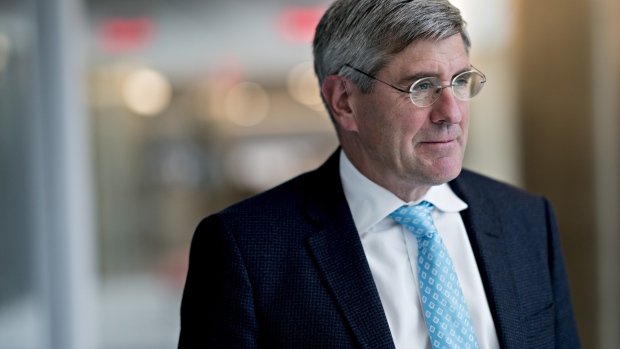Mar 22, 2019
Trump escalates feud with Fed by picking political ally for board
, Bloomberg News

It looks like a textbook example of political meddling with a central bank in an emerging market, except it’s happening in the U.S.
President Donald Trump on Friday said he’s nominating former campaign adviser Stephen Moore to be a governor of the Federal Reserve -- potentially putting a political loyalist in lockstep with Trump’s view on juicing the economy into the middle of Fed deliberations heading into the 2020 election.
Trump has gone from heckling Fed Chairman Jerome Powell on Twitter to trying to give one of his allies a hand on the levers of U.S. monetary policy. That’s a shift by the president, who’d previously opted for Republican establishment Fed picks including Powell, Vice Chairman Richard Clarida, and Vice Chairman for Supervision Randal Quarles.
As a Fed governor, a position that requires Senate confirmation, Moore would be in a position to espouse his and the White House’s view that the economy can grow much faster without generating inflation.
“Skeptics in an out of the Fed still think sustained 3 per cent to 4 per cent growth is out of reach,” Moore, 59, co-wrote in a March 13 op-ed in the Wall Street Journal. “Nonsense.”
Latest Step
Moore’s selection is just the latest step in Trump’s effort to exert control over the U.S. central bank, which was designed by Congress to be independent from short-term political pressure. After months of the president’s hectoring about interest-rate hikes, Powell in January put monetary policy on hold, then dined with him at the White House a few days later. On Wednesday, Powell went further, effectively taking rate hikes off the table in 2019.
Under the threat of constant second-guessing by the president, and potentially soon working with a Trump cheerleader inside the building, Fed officials may find it increasingly difficult to stay focused on keeping the institution at a distance from politics. That’s important because investors who purchase U.S. Treasuries trust the Fed to ignore the wishes of politicians and do what it thinks is best for the economy in the long run.
Powell’s strategy so far is aimed at avoiding a downturn requiring rate cuts and the emergency bond purchases that drew bipartisan scorn a decade ago, even if it means some people think he caved to a politician.
“In the eyes of the world, the Fed has turned quite political,’’ said Guy Lebas, chief fixed income strategist at Janney Montgomery Scott, in Philadelphia. “But I don’t think anyone in the Eccles Building sits around and says ‘the president wants this, let’s deliver it,’’’ he said, referring to the Fed’s Washington headquarters.
Fed spokeswoman Michelle Smith declined to comment.
Powell is already in a precarious spot with interest rates.
The Fed’s policy rate is now set at 2.25 per cent to 2.5 per cent. During the last recession, the federal funds rate was cut about 5 percentage points. While that was an unusually deep contraction, 2.5 percentage points leaves little room to stimulate the economy out of a slump. With rates at zero, the Fed might need to restart purchases of longer-term Treasury securities. For different reasons, quantitative easing was unpopular with both Republicans or Democrats.
l: to sustain the economic expansion, with a strong job market and stable prices for the benefit of the American people,” Powell said at the opening of his press conference Wednesday, explaining the decision.
The words reflect Powell’s awareness of the environment the Fed finds itself in. Fighting a recession with limited tools would be one of the worst things for Fed amid one of the biggest threats ever to its independence.






